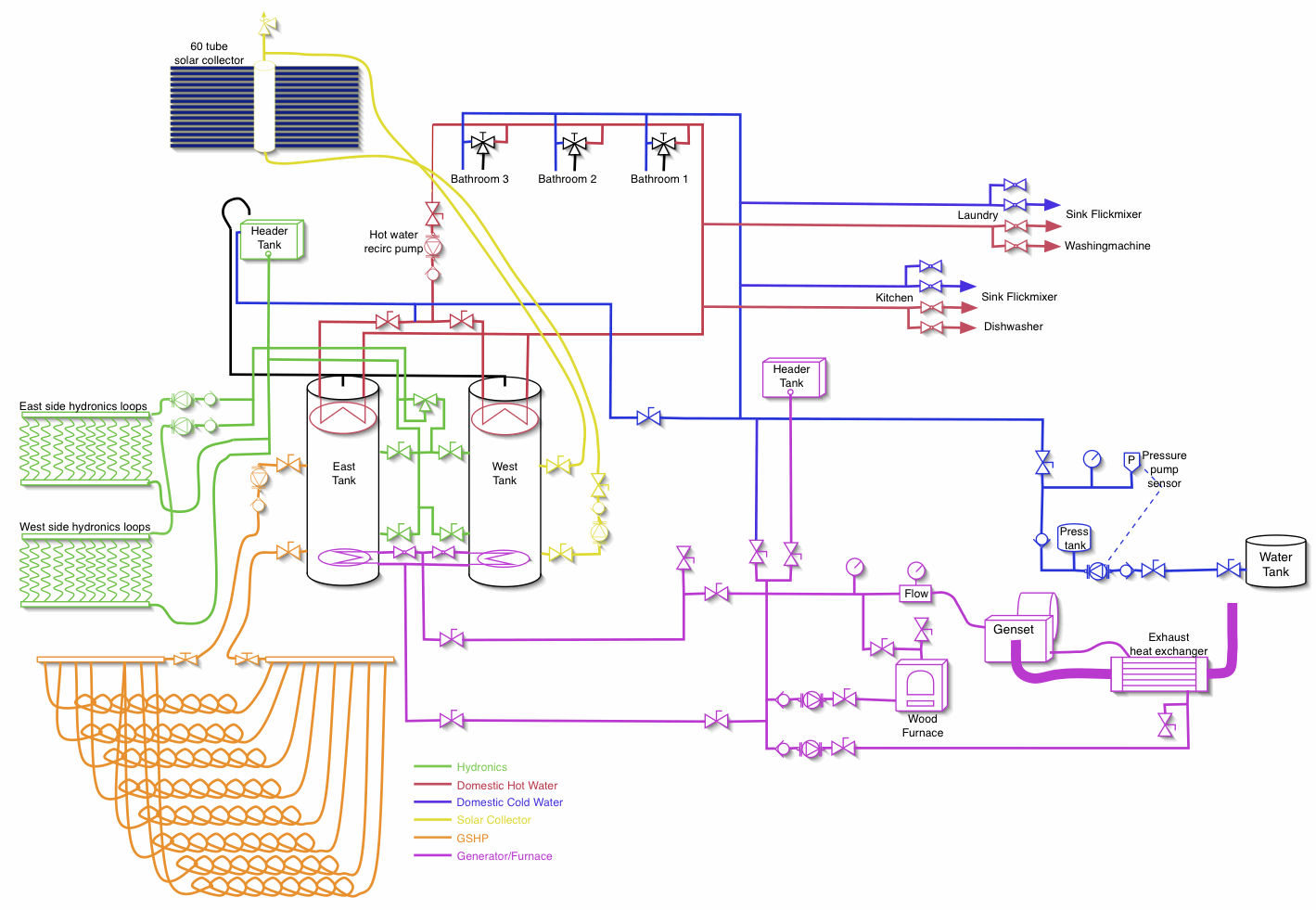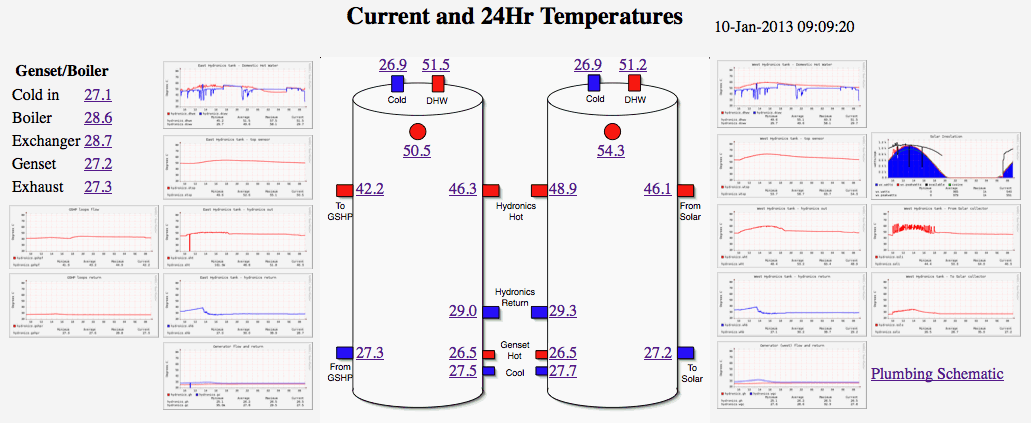Hi, firstly let me say that I am quite impressed with webcontrol even if I am not a programmer and I am learning the basics of PLC. I have a new mission for it, so explained. I used a dual fuel boiler, to heat my house, oil and wood. Teh boiler heats waer which is then pumped to radiators around the house. When the boiler is fired as oil, the oil burner is triggered by 4 zones thermostats, each calling for heat, until there is enough hot water stored inside the boiler or the thermostat in that zone being satisfied. Once this happens the oil burner stops until the cycle is repeated as needed. If I fire it as a wood bolier however, things are quite different. Wood fire can't be controlled as quiclkly, so it will burn more or less until all wood is consumed. I would like to ask your help with these basic 3 functions (the first of which will have to be multiplied for each of the zones):
1) temperature is sensed in a zone and the pump for that zone is switched on if below a set temperature and switched off if higher, with about 2 degrees hysteresis so that the pump doesnt cycle too often.
2) temperature is sensed in the boiler, and if it is below a set point all pumps are switched off. This is to avoid that the pumps keep circulating if no heat is available.
3) temperature is sensed in the boiler and, at a specific set point, a zone is activated. At that setpoint +10 degreees a second zone is activated. This is for protection, should the temperature in the boiler get too hot, then even if the zones do not call for heat they are activated sequentially and the heat from the boiler dissipated. Once the boiler temp falls below this set point all functions return to normal.
I would much appreciate help with the above, some or all, in setting up a basic PLC programme for these functions. I am using the new version 03.02.16b.
Thanks!
Gabir
1) temperature is sensed in a zone and the pump for that zone is switched on if below a set temperature and switched off if higher, with about 2 degrees hysteresis so that the pump doesnt cycle too often.
2) temperature is sensed in the boiler, and if it is below a set point all pumps are switched off. This is to avoid that the pumps keep circulating if no heat is available.
3) temperature is sensed in the boiler and, at a specific set point, a zone is activated. At that setpoint +10 degreees a second zone is activated. This is for protection, should the temperature in the boiler get too hot, then even if the zones do not call for heat they are activated sequentially and the heat from the boiler dissipated. Once the boiler temp falls below this set point all functions return to normal.
I would much appreciate help with the above, some or all, in setting up a basic PLC programme for these functions. I am using the new version 03.02.16b.
Thanks!
Gabir


